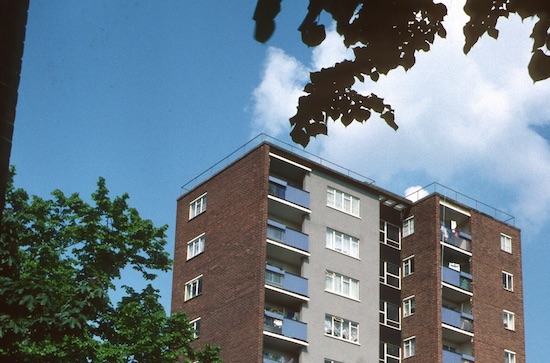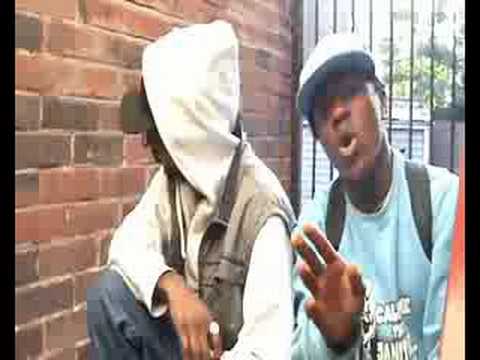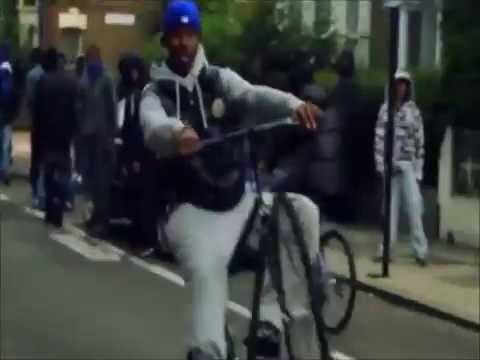A fresh start thinking I should stay low
but it’s when I moved to Forest Gate called a new place home
Started rapping thinking that I could be the next J.Cole
But we were on the block posted up on Woodgrange Road
Like why do you think they call this place the Gaza
You’re not living how I’m living so how can you have the answers
In Forest Gate North, Woodgrange Road is the spine that runs through the proposed urban village. In past times, this small area housed a number of entertainment venues; people’s palaces and cinemas. The Forest Gate Public Hall, also known The People’s Picture Palace, was set back slightly off the main road, situated between what is now a bakery and a pharmacy. It opened in 1902 but then it closed for good at the beginning of the Second World War. Later on, it had a new lease of life as a roller-skating rink, a clothing factory and then as The Upper Cut club. At its peak in the 1960s, it featured successful US artists including Jimi Hendrix and Stevie Wonder. By the time I went there as a young adult in the mid-1980s, rollerskating had made a comeback, and there was the occasional local live reggae band, but there were few signs of its glorious past as a cinema and music venue. After a short period as an electrical store, it was demolished in 2005 to make way for a ventilation shaft for the Channel Tunnel rail link.
The roads off Woodgrange Road contain much sought-after Victorian housing. Double-fronted houses, some with former servants’ quarters, line the streets that are named after Queen Victoria’s palaces and castles: Hampton, Osborne, Claremont, Windsor, and Balmoral. Bomb damage during the Second World War meant that some of the houses were replaced with a small housing estate, four small blocks on Claremont Road, a low-rise estate called Davidson Terraces, and a eleven-storey tower block in Windsor Road. This little haven contained streets and spots that were popular with young people. My Class of ’91 described this area with fondness, and talked about a particular spot that “we used to call the warm block”, it was more comfortable to hang out there because it was less exposed to the weather. You could get to “warm block” by walking through the alley that runs between the supermarket and the pound shop. These were places where young people indulged in common youthful endeavours; meeting up, hanging out, and passing the time. By the mid-2000s, easier access to camera phones, camcorders and YouTube meant that making a music video for broadcast online was a popular and relatively cheap activity. At the same time as groups of predominantly Black youth were coming together in public to make music, policymakers and legislators began to make more of the imagined connection between youth (a dangerous time) and the streets (dangerous places), with devastating consequences.
Three locally made music videos – ‘Its ms – Promotional Hood Video’ by Minisparks, ‘Who’s That Click’ by Woodgrange E7, and ‘Talks’ by Baseman and Snizzy – created over an eight-year period, were filmed in the heart of the Forest Gate area. It is worth looking at these in more detail.
Minisparks — ‘Its ms – Promotional Hood Video’ (2008)
This video was filmed by a low-budget company to be uploaded to YouTube. It begins with silence for thirty-eight seconds as the shot pans across the police helicopter flying overhead. Roughly fifteen young men populate the video, which is set in the small housing estate behind the shops, one of these so-called “backland areas” described in the Forest Gate Development Plan. There is one main MC, and the remaining group add substance by adlibbing and making the necessary gestures. At 1:08 there is an iconic shot: to the right are the garages, and the group of young men stand in front of a wall, in various poses. Two of them have bicycles. They wear the standard attire for the time – snapbacks, hoodies and baggy denim jeans. A solitary young man sits on the wall just behind the main group. Lyrically, the song is limited, but there are several references to E7 (the postcode for Forest Gate) and shots next to the Claremont Road street sign. The final frame shows a police car in Woodgrange Road itself, in front of the Methodist church. The video comes to an abrupt end at 3:06. It is a playful, unpolished effort, designed to show off the developing MC skills of the main character. In ten years, Promotional Hood Video has amassed almost eight thousand views and a single comment: “ard” (hard).
WoodGrange E7 — ‘Who’s That Click’ (2012)
The ‘Who’s That Click’ video involves a large group of young Black men calling themselves ‘Who’s That Click’ – after the street at the centre of what is now the urban village. Forgoing a traditional grime beat, the MCs in this group rap their lyrics over the soundtrack of a 1990s American RnB song, reworking ‘Who’s That Girl?’ by Eve into ‘Who’s That Click’. As a host borough for the London 2012 Olympics, Newham was keen to protect its reputation, so this video was one of seventy-six removed by the council as part of a public safety initiative. In a counter move, the video was reposted in April 2013 with a disclaimer at the start stating that the views were the artists’ own.
In the video, MC performance is interspersed with shots of people riding bicycles, a game of football, passers-by going about their daily business and patrolling police officers. It can be seen as a performance of youth culture that draws on both global and local references. There are four main performers, with the remainder of the group providing the necessary adlibs, all adopting the normative style of swagger, gesture and pose. Common themes emerge – in the lyrics we hear about the primacy of the crew and about how hard life is in the neighbourhood. Visually, we see bicycles, clothing – hoodies, snapbacks – and a shot of the police and a police car. Some of the video is filmed on a basketball court a few streets away on a post-war council housing development. In the five-minute video, the four MCs consecutively weave a story of “real life” in Forest Gate.
Baseman x Snizzy — ‘Talks’ (2016)
‘Talks’ is a much more polished affair, and begins by referencing the news item relating to the removal of the ‘Who’s That Click’ video in 2012. Filmed and directed by videographer MayowaHD, the beat is softer, with tender female vocals, but it belies the harshness of the lyrics. A sense of play that is evident in the previous videos is absent and both protagonists seem weary. One MC wears a gas mask, possibly as an aesthetic gesture or perhaps as a disguise. The talk now is of trusting no one, and of Forest Gate being like a war zone. As the drone shot pans across, you can see the landmarks in Woodgrange Road, Forest Gate Station, the library and the supermarkets. One of the performers says, “Fuck the hood, I just wanna live lavish”. Filmed from the rooftop of a former factory in Woodgrange Road (now luxury apartments) there are some scenes on the same basketball court that was used in the ‘Who’s That Click’ video. No police presence is apparent in this video.
In all three videos, the geographical location is visually and lyrically identifiable and referenced, sometimes by name as “Forest Gate”, by its postcode as “E7”, or by its local name “Woody” (for Woodgrange Road). All the tracks reference local landmarks from above and below — in the earlier work, filming is carried out from the ground, but by 2016 we have aerial shots via drone. MCs in these videos have adopted personas that then purport to speak from “personal experience” of a life on the outskirts. ‘Who’s That Click’ references US rap with the line “more Crips than Campton (sic)” and makes symbolic use of the colour blue, road signs and physical landmarks to signify territory and draw attention to the postcode rivalry. ‘Promotional Hood Video’ and ‘Who’s That Click’ both exhibit a youthful exuberance, showing young people enjoying life and enjoying what they do. As we arrive at the ‘Talks’ video, however, the young men have grown up, they are more measured in their expression, they seem weary, ground down even. Despite the playfulness in some of the scenes, the spectre of death is present as one MC refers to his enemies wanting to put his face on a shirt. The message now is trust no one.
Music brings to the fore images, memories, experiences and feelings of deep attachments. According to Paul Gilroy, music as a cultural and creative practice can host “an alternative structure of feeling” where it is possible to bear the wrongs of an unjust world and maybe offer the hope of some other order, some other way of being. Maybe, as Christina Sharpe asserts, creativity is an aesthetic response to the emergency of Black life in the hold. Instead of abjection, Black being embodies creativity as a form of consciousness, a survival of Black exclusion from political and cultural belonging. Performance, in this case through music, mediates survival, but more than that, it brings joy, possibility, and hope. For Black youth in Newham, grime and rap music is a way to forge a sense of identity in a place deeply mired in historical and contemporary racism.
These three music videos illustrate how Black youth and young Black men have carved out room for themselves in one of the poorest areas in the UK, in an area where life chances and opportunities are limited, ever-shrinking, and informed by racism. In each video, the main MCs and the supporting chorus all play their part in leaving a trace of themselves, a legacy to be discovered at a later date. Making music allows these young men to respond to the racial terror of Black lives lived under occupation; it enables them to resist, in multiple ways, the marginal roles that have been mapped out for them. Sonically and lyrically, they place themselves at the centre of their own life stories, using wayward performing identities that, as Saidiya Hartman suggests, show value for lives that are deemed to be disposable and that refuse to conform to the privatised order of social life.
To make music, young people have to come together, and make connections to the place and sounds that give them a sense of belonging. Forest Gate Youth Centre (at the corner of Dames Road and Woodgrange Road on the map) was a vibrant spot, with equipment and other resources for creative activities. After the 2008 global financial crisis and the implementation of austerity, Newham, like many areas, was forced to make cuts and, as a non-statutory service, youth provision took the biggest cut. Forest Gate Youth Centre effectively became a ghost site as workers, knowledge and resources dissipated. Combined with phasing out the Education Maintenance Allowance (EMA) that provided weekly income for sixteen-nineteen year olds in Further Education, this made it more challenging for young people to create and share music.
Newham Council’s Supplementary Planning Document for Forest Gate outlines its improvement plans for the area. It wants to maintain the Victorian conservation area situated in the roads off Woodgrange Road, whilst also enhancing Forest Gate as a town centre, upgrading the shopping and leisure experience and creating a relaxed “urban village” environment. The Core Strategy looks further ahead, to 2033, when “Forest Gate town centre will become an attractive and vibrant centre, retaining its urban village feel founded on established independent shops, arts and cultural activity”. As the town planners have also identified that the social housing estates in the roads off Woodgrange Road are “hotspots for crime”, the remit of “social housing landlords” is also being extended. Social housing landlords are woven into systems that aim to address anti-social behaviour by monitoring and controlling how residents act not only within the property itself, but also in the wider neighbourbood. Overall, the council is clear that it will use its powers of enforcement, through environmental health, public order policies and legislation, “to raise the quality of the built environment” in Forest Gate town centre, which in their view has been “adversely affected by a proliferation of takeaways and betting shops… and general low levels of affluence”. In this new vista, cheap food for poor people is not a desirable feature.
While the new wave of gentrification may limit the possibilities of utilising public space, young Black residents continually find ways to make music that matters for them. Baseman is a rapper from Forest Gate, and his lyrics open this essay. In his musical contribution to SBTVs Better Place series he talks about moving to Forest Gate, making specific reference to the high street and Woodgrange Road. On his track, Baseman talks about relocating from another London area to Forest Gate, and about the internal conflict that underpins striving for musical excellence while simultaneously struggling with the pull of road life. Baseman asks us to consider why the location that he speaks of (and that Newham Council wants to eradicate) is known as “the Gaza”. In a direct counter to Newham policymakers desire to create an “urban village”, Baseman responds to the challenges faced by those who populate the location. Drawing on an old African and Caribbean sentiment of “who feels it, knows it”, he asks how those who do not live there can presume to know how to deal with the difficulties that people there face. Young people in this area have been framed as troublesome, but the trouble is structural and institutional. On average, people in Newham die younger, earn less, and are more likely to be out of work, and there is a social and economic cost to these challenges. For the council, one way forward in branding Newham as a desirable area is to create an urban village, populated by better off residents that do not pose a problem or add to the costs of an already stretched public purse.
Gradually, the Forest Gate area has begun to change, and an ongoing period of adjustment is in motion as the Crossrail development takes shape. The resulting work on Forest Gate Station and the redevelopment of the high street signal the arrival of the urban village. Other modifications are also visible — the children from the secondary school in Forest Lane are no longer allowed out at lunchtime, so you no longer see adolescents on the street during the daytime; a weekly market on the corner of Sebert Road offers organic foodstuffs (bread, meat, vegetables); the Railway Tavern (on the corner of Forest Lane and Woodgrange Rd on the map) becomes the Forest Tavern after a refurbishment, with folk music providing its new sonic backdrop. Slowly but surely, I come to realise that it is the young Black adults who are less visible; in many of the communal, social, or retail settings, they are missing. When I walk through Forest Gate now, I can hear music, laughter, chatter, a plethora of sounds that let me know that young Black adults are in existence, just not outside in the public arena. Those who take up space on the street are older people, and the newcomers, maybe in their late twenties, or early thirties, sometimes with small children. Their presence brings different sounds.
If you walk from Woodgrange Road along Dames Road towards Wanstead Flats, you come to a point where if you turn right you are in Redbridge, and if you turn left you are in Waltham Forest. Two different boroughs, two different approaches to policy, planning, and heritage. Place is complex, it embodies a multiplicity of cultures, meanings and identities, and this true of Newham in general and Forest Gate in particular. The composite of people, structures, institutions and social connections in this area are unfixed, subject to and influenced by policy planning.
Grime and rap both play a key role in the production of place – as a setting, the physical, built environment of the street corners, the estates, stairwells and basketball courts, and as a setting for daily social interaction – hanging out on the block. The dynamic interrelationship between music and place is disrupted if social interaction takes place mainly online or indoors. Social interaction fires the geographical imagination and allows for a sonic imagining of place. Music becomes a force that defines place, and for Black youth in Newham, it is enhanced by Black Atlantic flows that fuse together the local, the national and the global.
Terraformed: Young Black Lives in the Inner City by Joy White is published by Repeater





